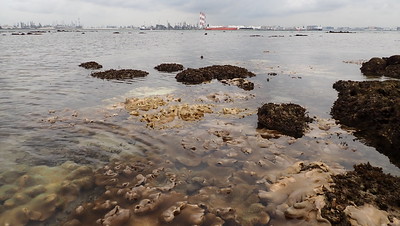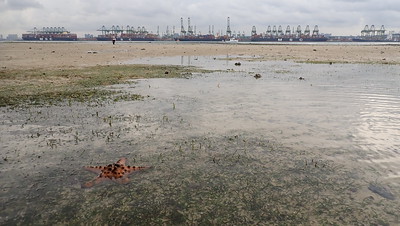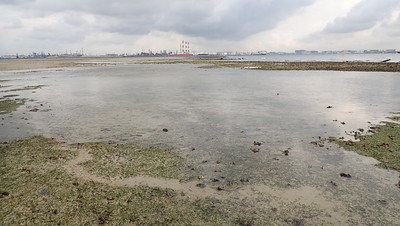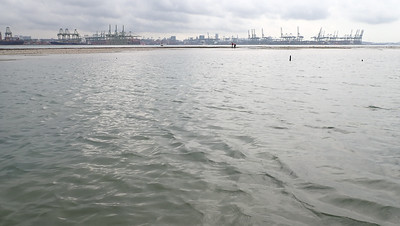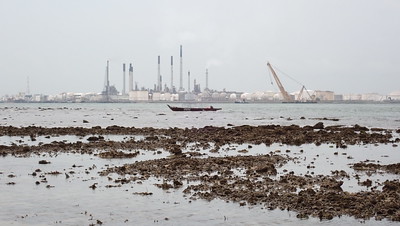Today, I estimate about 10% of the hard corals that I saw are bleaching, with an additional 20% showing stress (paler than usual or with bleaching portions) or with recently dead patches. Some parts of this shore has large patches of leathery soft corals, very few of those I saw were bleaching. The situation wasn't as bad as what I saw during mass coral bleaching in 2016. Despite the drastically reduced seagrass cover, it was nice to see many dugong feeding trails. The team also found Giant clams.
I surveyed the western end of Cyrene which is the most reefy part. I could see white patches of bleaching coral and leathery soft corals.
But many hard corals that I saw, both large and small, were doing alright with no pale or bleaching portions.
I'm surprised to see many large clusters of leathery soft corals on the western end of Cyrene.
Most of the leathery soft corals I saw were alright. Only very few were outright bleaching, and not many had pale patches or dying patches.
During mass coral bleaching on Cyrene in Jun 2016, about 80-90% of the hard corals and soft corals that I saw were bleaching. I last surveyed this reef in Jun 2019, when I did see some bleaching as well.
 |
| Mass coral bleaching at Cyrene in Jun 2016. |
I also noticed some sponges with greyish melted portions. But most of the sponges I saw were alright.
I came across a few clusters of small Horse mussels embedded in the sand. The shells were mostly empty and I saw a row of Reef murex snails that appeared to be feeding on them.
The rest of the team also came across several Fluted giant clams in several spots on the reef.
I didn't see a lot of marine life on the sandy shores. Only one Common sea star, sprinkles of sand bubbler crabs, one Soldier crab, trails of moon snails, and some Acorn worms.
The seagrass cover on the western end of Cyrene has drastically reduced - I estimate about 50% is lost. Where there used to be lush meadows, today there is very little seagrass east of the sand bar. The sand bar itself appears to have moved and has become less tall.
Despite the thin seagrass cover, there were many dugong feeding trails on the northern edge.
The seagrass cover is denser on the west of the sand bar on western Cyrene. There were many dugong feeding trails here too.
There were dugong feeding trails in the seagrasses in the middle of the reef too.
The deep pool in the middle of the reef is still mostly bare of seagrasses.
Tape seagrass remain cropped with some so severely cropped that only the stiff leaf edges stick out of the ground. There were also patches of burnt seagrasses. And some patches of fluffy seaweeds among the seagrasses.
For about half an hour, this sampan was 'parked' off the southern edge of Cyrene with two large fish traps. One person was getting on and off the boat, apparently working on something in the water.
I saw a series of low pegs laid out in rows in the middle of the reef. I couldn't find any research notice. I'm not sure what is going on.
There were still huge piles of sand on Jurong Island nearest the western tip of Cyrene. In Jan 2019, I had already had suspicions that the ongoing reclamation at Jurong Island might be affecting Cyrene.
A large area on Jurong Island (Ayer Merbau Basin) near Cyrene is being reclaimed - area outlined in red in this map on the MPA website.
 |
| Image from the MPA website |
 |
| From Port Marine Notice 109 of 2018. |
Posts by others on this survey
Jianlin Liu
Loh Kok Sheng
Chay Hoon
Kelvin Yong
Other surveys during this low tide
Richard Kuah at Coney Island
Victor Toh went kayaking to Terumbu Buran, Seringat Kias and Kusu Island.




